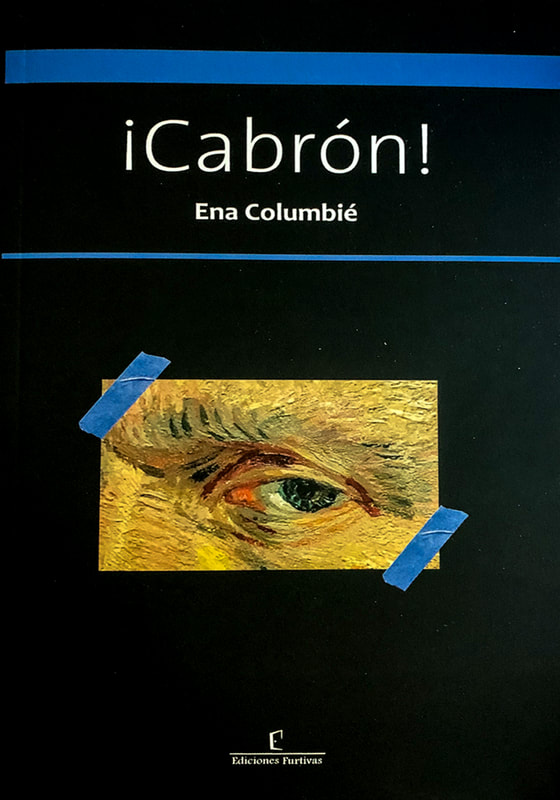¡Cabrón!
Ena Columbié
|
When you purchase a book through our site, we earn an affiliate commission and so do independent book stores.
|
We could say the stories by Ena Columbié that make up the collection "Cabrón" (Ediciones Furtivas, 2023) are transgressive, but the word has been used and misused so much that it has lost its punch. Let’s say instead that they are cabrones, like their title, in the best sense of the word. Short, vivid, sometimes funny and other times chilling, without unnecessary embellishments, these stories are powerful and gripping. Reading them takes us around the world to the most diverse places in time and space. The literary journey begins at the Le Fourcy tavern on the night when Van Gogh famously loses his ear. And from there we go straight to the Cuban manigua and Martí’s diary— apocryphal or not. Let the reader find out who the cabrón is in this story that has a lot of history mixed with the best kind of fiction. Then back to Paris –won’t we always have it? The City of Light is the setting for many more stories. There’s Balzac writing "La Peau de Chagrin " and Alejo Carpentier dazzled by a famous dancer. Back to the Caribbean (Havana 1932) we open Social, the magazine that reviews a concert by Moisés Simmons. Again in Europe, Spain to be exact, a well-known author appears (an author who has been under the shadow of his most famous characters). That’s how he is portrayed in one of the most emotional descriptions in the book: Miguel sat on the bed and broke into a choked and deep cry like the sea from where he had come. He cried silently for the dead left behind, and for the piece of life slipping away from his arm wrapped in a bloodied and ragged cloth. Another character who isn’t cabrón, but awful and distressing, is Irma Ilse Ida Grese, who sings Nazi songs before being executed. And there’s so much more that it’s not possible to mention it all, but let’s not forget the burning of Bayamo City seen through eyes that have witnessed much suffering and eyes that are yet to see it.
|
Cuba is left behind by the main character of “Despedida,” a shy teenager who describes the beginning of her exile as follows: “A few hours ago I was one of them, I was the others before crossing the glass, and now I am an endless question.”
In Florida (“the big nose”) another story unfolds, with memories of racism still fresh. History has been preserved by one of its protagonists, who rightly sends the past, full of humiliation and hard work, to hell.
In South Africa, the enigmatic sculpture garden of Helen Martins opens up to the readers. And Leopoldo Panero and Mayakovsky, crazy poets or poets on the verge of madness, keep playing to their very own music.
The author also plays to her own music with these thirteen stories (mind you, thirteen is a symbolic number) that offer an Impressionistic painting of cabrones and encabronados. A painting that must be looked at carefully so as not to miss the characters moving in the background, winking at us with complicity or contempt.
In Florida (“the big nose”) another story unfolds, with memories of racism still fresh. History has been preserved by one of its protagonists, who rightly sends the past, full of humiliation and hard work, to hell.
In South Africa, the enigmatic sculpture garden of Helen Martins opens up to the readers. And Leopoldo Panero and Mayakovsky, crazy poets or poets on the verge of madness, keep playing to their very own music.
The author also plays to her own music with these thirteen stories (mind you, thirteen is a symbolic number) that offer an Impressionistic painting of cabrones and encabronados. A painting that must be looked at carefully so as not to miss the characters moving in the background, winking at us with complicity or contempt.
Ena Columbié is a Cuban American writer and artist. She holds a degree in Philology, has received many awards and published several books, among them El Exégeta (Oriente, Cuba, 1995); Ripios (EntreRíos, USA, 2006); Las Horas (Strumento, USA, 2011); Solitar and Isla (Alphabeta, USA, 2012); Luces (Silueta, USA, 2013); Sepia (Betania, Spain, 2016); Dossier Mireya Robles (La gota de agua, USA, 2016), 13 Poetas (Hypermedia, España, 2017) Jazz (Aduana vieja, Spain, 2018) Confesiones de un idiota (Silueta, USA, 2018); Intimisma (Alphabeta, 2018); Piedra (Bokeh, Leiden, Nederland, 2019), and Nauseamundo (Piedra de Sísifo, USA, 2020). She writes for El Nuevo Herald and lives in Miami.
¡Cabrón! is a publication by Ediciones Furtivas.
¡Cabrón! is a publication by Ediciones Furtivas.
Comment Box is loading comments...
|
|









